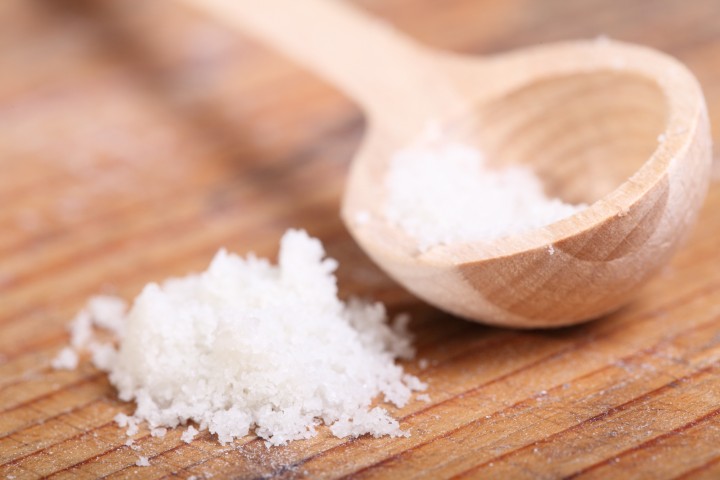
If you want to find out what salt does for your loaf, try and leave it out and take a bite…
Klik hier voor de Nederlandse versie
A while ago we took a closer look at the percentage of salt we put into our bread. If you are a big bread eater, chances are high you get a lot of your daily salt intake via your sandwiches.
The UK recently came out with a new standard for the amount of salt in bread baking. So we tested this new standard to find out what the effect would be for our own bread baking and want to share the result with you…
First, some things you need to know about salt and bread baking:
What does salt do?
- Salt acts as a natural antioxidant in the dough and not only adds taste but especially helps bring out the flavors and aromas present in the flour and other ingredients.
- Next to its role in boosting the flavor of your bread, salt plays a role in tightening the gluten structure and adding strength to your dough. It helps the loaf to hold on to the carbon dioxide gas that is formed during fermentation, supporting good volume.
- Salt slows down fermentation and enzyme activity in dough. The salt crystals draw water away form their environment (salt is ‘hygroscopic’). When salt and yeast compete for water, salt wins and the yeast is slowed down.
- Because of its moisture maintaining properties, salt can prevent bread from getting stale but it can also (this is especially true in humid environments) absorb moisture from the air and leave you with soft crusts and soggy bread.
How much salt is considered normal in bread baking?
In bread baking the percentage of salt added that is considered normal, ranges from 1.8% to 2.2% of the total amount of flour, depending on the recipe and personal preference. Low salt contents can lead to bland loaves, anything over the 2.2% norm will likely be considered too salty. The UK recently came out with a new standard of 1 gram of salt per 100 grams of the final baked bread or about 1.5 to 1.6% of the total amount of flour. So instead of a percentage of salt to flour, they give the amount of salt per 100 gram of the actual finished product / bread.
Should I be afraid of salt touching my yeast?
Short answer: NO! Usually you add salt and yeast to your flour and immediately start mixing. It is totally unnecessary to put salt on one side and yeast on the other and seconds later start mixing them together anyway. You do not want to add salt on top of fresh yeast and leave it for minutes because then the salt will indeed kill the yeast.
What type of salt should I use for bread baking?
All salt is good, as long as the salt crystals are fine enough and dissolve easily. A lot can be said for different types of salt, some contain additives, some have other minerals next to the sodium chloride (NaCl) considered beneficial for you (like Celtic sea salt which is also lower in sodium). You can make up your own mind as far as the health benefits go, taste wise it will not make a big difference to your loaf. Due to the relatively small quantity of salt it would be really hard to detect subtle differences in flavor.
Our own findings with the new salt content standard
So, we looked at our own baking and did a test with this new UK standard of 1 gram salt per 100 grams baked loaf. For example, for a standard pain rustique (750 g dough, weighing about 680 g after baking) this would mean lowering the added salt from 8 g to 6.8 g or from 1.17 g to 1 g per 100 g bread.
Examples of bakers percentages for a loaf of pain rustique:
2.2% of total flour would mean almost 10 g of salt added to the recipe
2% – about 9 g of salt
1.8% – just over 8 g of salt
1.5% – about 6.8 g of salt (the new UK standard)
We tested and tasted the bread with new, lower salt content several times, together with some bread friends. Result: We all had a very hard time noticing any difference. There is a line below which it would become noticeable of course, but this new standard is no problem for us. We have to add that using high quality (organic) flour also makes a big difference in taste and perception of saltiness. Also see our flour experiments. To enhance flavor, salt has to have something to work with, and it will have a hard time bringing out any flavor when the flour you work with is overly processed and bland to begin with!
We now use it in most recipes for our daily bread, except when making dough for things like pizza and focaccia and other flatbreads. For these special breads our personal preference is to make this dough a bit saltier.
Let us know your thoughts on salt!



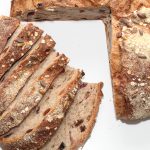

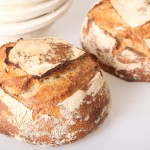
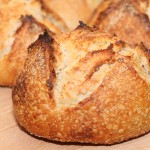
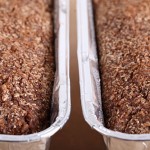

William says
Instead of percentages etc, you should say that, for example, 1 TSP to 2 TSP for 3 cups of flour.
Weekend Bakers says
We are sorry William, we know Americans like their cups and spoons and are used to it, but as Europeans we love to be exact and weigh everything, including water for consistency in our baking. Especially with weighing small amounts of yeast and salt, a precision scale that can weigh tenths of grams is something we couldn’t do without. You know exactly what you put in and will discover that there is a difference in taste when putting e.g. 8.2 or 9 grams of salt in your loaf of bread.
comfort Ekong says
How much salt,butter,sugar,yeast should I need for 5kg flour making bread.
Weekend Bakers says
It really depends on the recipe but as for the salt 2% for 5kg flour would mean you use 100 grams of salt.
Ewelaku says
Thanks well said and educative. Your last comment said your personal preference is to make the dough a lit bit saltier what percentage of salt to the flour do you mean?
Weekend Bakers says
Hi Ewelaku,
It is usually somewhere around 1.6 to 1.7% for our daily bread and a bit higher for things that we make less often like certain flatbreads.
Gail says
How much salt in a baking from scratch sourdough bread?
Weekend Bakers says
Hello Gail,
For our basic sourdough bread like the pain naturel we use 1.65% ourselves. (see: www.weekendbakery.com/posts…n-naturel/). We like it that way, also because a lot of flavor is developed in the bread over time, especially if you use good quality (organic) flour. Most people would be used to something around the 1.8% but we find it is very easy to get used to a bit less.
Ismaila Sule says
My name is Ismaila and i will like to know what percentage of Butter, suger, milk, flavour and baking powder of the total percentage of flour that can be added to bread baking inorder to enreach the quality of the bread?
Thanks
Weekend Bakers says
Hello Ismaila,
That is a hard question to answer in general. All these different ingredients have an impact, also when used in combination with each other, all resulting in different taste and texture. You can add lots of butter up to 100% to a brioche for instance, but you do not want every bread to be a brioche. Regular (French type) breads usually do not have any fat or oil in them at all.
So it depends very much on what recipe you are thinking of making and your objectives for taste and texture and price of course.
If you want to learn more we would suggest buying a good book on the subject. We can recommend Bread by Hamelman and How baking works by Paula Figoni for example.
Wayne Slocumb says
I appreciate this article on the use of salt when making bread. I realize now I need to increase the amount of salt I use, since the taste indicates insufficient salt.
Tomorrow I plan to make bread using 2% salt (by weight) and see how it improves the almost bland taste.
Wayne
Weekend Bakers says
Hi Wayne,
Sounds like a plan! Bland does indicate that your bread could use some more salt, but like we say, how much is very personal. The perks of baking your own, you can make it just as you like best!
Escafon says
Hello Ed and Marieke,
There exists allso bread completely without salt, and this is not for health reasons. Have you ever tasted Tuscan bread? Maybe it is a bit of an acquired taste, you won’t fall in love with it as easy as with a french baguette, but with tuscan food it is delicious and when eaten with for example nutella for breakfast you just sprinkle a tiny bit of fine salt on your slice of bread before spreading something sweet on it.
Escafon says
It is a type of sourdough bread which does not taste sour at all, rather low hydratation compared to french bread, made from wholewheat flour without the fibres, the taste is so full that after having learned to appreciate it I did not miss the salt at all.
Weekend Bakers says
We have not tasted this sourdough bread without salt, sounds interesting!
Weekend Bakers says
Hi Escafon,
Yes, we have been to Tuscany and we tasted the saltless bread. The first time it is very strange, but somehow you get used to it, you indeed need the combination with the excellent Tuscan food. However, we still prefer bread with a bit salt in it.
Peter Wells says
At the moment I am making sough dough bread using spouted whole wheat flour, and typically the recipe says for a 2lb loaf 3 cups of flour and 2 cups of sour dough, with among other things 1.5 teaspoons of salt. I have been using coconut salt and wondered if I would be better using himalayan Pink Mountain salt.
Thank you for your useful information.
Peter Wells.
Weekend Bakers says
Hi Peter,
We hope some baker can advice you on this one. We use Celtic sea salt and have no experience with the salts you use in bread making and have not heard of coconut salt, but presume it is a mixture of coconut and salt?
Edel Carrillo says
I am really enjoying exploring your website!. I’m moving to Delft and found out there is a flour Mill there (molen de Roos). Today I bought a bag of tarwebloem and it states that I should use broodzout, how is that salt different to the cooking one?. I’m excited about trying this floor as I have always used supermarket ones, though organic and unbleached.
Weekend Bakers says
Hi Edel,
Hope you will like it in Delft, great to have a mill close by. The government in Holland states that bakers should use salt which contains iodine, because it is assumed Dutch people do not get enough of it with their daily food (the thyroid need iodine to function). When you bake your own bread you can decide for yourself if you want to use salt with or without iodine. In Holland you can check the package or look for JOZO zout (JOZO= jodium zout (salt with iodine) which is available in every supermarket. It will not effect your baking results using one or the other.
Hope you will like the windmill flour!
Happy baking,
Ed & Marieke
Edel Carrillo says
Thanks!
Mishu says
On the Subject of Salt ratio in 85% bread recipies
Mishu says
I like to use 3%. 2.2 does not give enough umph!
I use durum whole wheat organic hard bread flour and sourdough starter.
Weekend Bakers says
Hi Mishu,
Wow that is quite an amount. Which shows how different our tastes can be 🙂
Richard Davies says
Great website and I have Really enjoyed making your bread and learning a lot of new skills from you. I was wondering though. Is it possible to use lo salt instead of conventional salt in bread making.
Weekend Bakers says
Hi Richard,
Thank you very much! Yes, it is perfectly OK to use low salt, no problem.
Philip Andrews says
Very helpful and we’ll written. I’m mainly making sourdough – but using a panasonic bread machine on the French stick program – works a treat – excellent results. I then put it in my Brodick & Taylor proving oven and get a fantastically well risen organic wholemeal loaf costing about 55p.
Weekend Bakers says
Thank you Philip for sharing your experiences with us. How wonderful it is to get the best loaves and the satisfaction of making your own at such low costs. So many reasons to be a home baker.
Kris says
Thanks for the interesting and useful info…!!
Weekend Bakers says
Thanks for finding it useful Kris!
Mary Lynne says
I just finished making The French Chef’s (Julia Child) French bread recipe which is for a classic baguette. For a first attempt I am satisfied and know several things I will do a bit differently for my next attempt. One thing I will do is reduce the salt. For her recipe using 3-1/2 cups of all-purpose unbleached flour, she used 2-1/4 tsp. of salt. Is that a high ratio? I followed that and found the crust of the bread extremely salty (and I love salt!) Math has never been my strong suit and I don’t know how many grams 3-1/2 cups of flour would weigh so could someone help me that out and would it be within the 1.8 to 2.2% range?
Weekend Bakers says
Hi Mary Lynne,
This is very interesting. We did a calculation for you. The amount of flour you use in grams is approximately 455. The amount of salt in this recipe is about 12.8 grams. (Remember, you can never be exact when using cups and spoons, so it is possible you used less flour and even more salt). But the percentage of salt comes down to slightly over 2.8%. So, this is very, very high and no wonder you describe it as extremely salty.
If you would use the amount corresponding with the new standard as described above you would use about 6.8 grams of salt. If you use 1 teaspoon plus 1 quarter teaspoon you would get around 7.1 grams of salt, which would be the amount we would choose that comes very close to this new standard and is easy to measure for you). If you aim for the standard between 1.8 and 2.2 % it would be between 8.2 and 10 grams of salt. Expressed in teaspoons that would be between slightly under half a tablespoon for the 8.2 and half a tablespoon plus half a teaspoon for the 10 grams (this is why we use scales 🙂
Hope this helps and happy baking!
Rosalind Hambley says
I find most comercial breads taste bland. In short disgusting. Can only think it has something to do with less salt and more unnecessary additives.
Weekend Bakers says
We know what you mean. The blandness also has a lot to do with poor quality flour and not allowing enough time for the dough to develop properly. All things you can do differently when you bake your own!
Karin says
Great article. Thank you!
Howard says
I use no salt in my bread-making for health reasons (to avoid high blood pressure), and did find this meant the bread was a bit bland, so I tried various herbal additions instead and settled on oregano – which leaves the bread tasting very good in my opinion.
After some experimentation, I’ve settled on using 75% wholemeal and 25% white bread flour, and more oil than recipes suggest,.which seems to result in loaves that are well risen and light.
Weekend Bakers says
Thank you Howard, so good to read you found an excellent alternative and can still enjoy your baking and bread!
Euhill says
I wonder if magnesium chloride or potassium chloride could be used as a sodium chloride substitute in bread baking. Magnesium chloride has the opposite effect of sodium chloride ie it lowers blood pressure.
Weekend Bakers says
Hi Euhill,
We would not be comfortable advising something like this. It would make sense to always discuss these matters with your physician. You need these minerals, but the amounts you need are very different and can also vary from person to person, depending on your health and needs.
Tom Limoncelli says
I am old and new at baking bread. I also found your salt to flour explanation hard to understand. If I give you my recipe ingredients for making bread can you tell me if the salt content is good, just OK or needs to be changed. Thank you
500 g bread flour
450 g water
15 g salt
2 tsp yeast
Weekend Bakers says
Hello Tom,
We can tell you that is a LOT of salt! 15 grams for your loaf is 3% salt. The normal standard would be 2% which is 10 grams (2 % of 500 g flour). Our lower salt usage that in our opinion still tastes good (provided you use good quality flour that has taste of its own) would be around 8 grams of salt for your recipe. The new standard in the UK (so the new healthier guidelines) which is 1 gram salt per 100 grams baked loaf for your recipe would be around that amount too (around 8.5 grams). Anything over 11 grams for your recipe will be considered too salty by most people.
Hope this helps.
Happy baking,
Marieke
Tom says
OK I will use 8g of salt (instead of 15g) . You mention I should use good quality of flour…….what do you believe is good quality? Bread flour instead of all purpose?
Weekend Bakers says
Hello Tom there’s a lot of difference in quality in flour , from very cheap supermarket brands to stone ground organic. You can see what difference it can make to your baking result in our experiment here: www.weekendbakery.com/posts…nt-part-1/
When baking bread using good quality bread flour with the right amount of protein will give better results.
PY says
I had baked salt-reduced multissed bread, salt content is reduced from 1.0% to 0.2% on total recipe. The dough is sticky and the bread has low volume and no oven spring. Any suggestion to solve the problems?
Thank you.
Fred Lee says
I have baked white sandwich loaves salt-free and they always turned out well. I make mine salt free mainly for health reason. I have high blood pressure and a kidney condition that required me to take in less sodium. My breads may be a bit bland but are soft and moist even after three days. They make nice crusty toast and goes so well with marmalade or just plain butter. I find that self-baked breads have much more bite than commercial ones. Doesn’t go out of shape no matter how they are stored. Self-Bread is worth every effort.
Weekend Bakers says
Hi Fred and PY,
By accident we once baked some baguettes without salt, but they looked just the same as our regular ones. Only after tasting we discovered our omission. Salt has influence on the structure of the bread but it should be perfectly OK without (except for the taste part being different). Excellent to read how you adapted your baking exactly to your needs and enjoying it so much Fred!
PY we suggest you try another brand or type of flour and make sure you have the right protein content for bread baking (around 12.5%).
Carol Chang says
I recently bought a Toastmaster bread maker. Their recipe calls for these basic ingredients: 2 tsp salt, 6 3/4 tsp yeast and 4cups + 2 tbsp all purpose white flour, 1 1/2 cups of warm water (not in this order). Bread rises nicely, is fine grained but is waaaay to salty to be edible. In the subsequent trial I reduced the salt to 1/2 tsp, yeast to 1 tsp, all other ingredients remain the same includng water. The loaf turned out to be fine grained, rose to triple volume of the dough and is very tender and soft…beautiful. I somehow think these bread making machine producers are in kahoots with the yeast manufacturers…why on earth would anyone make a 2 pound load of bread with 6 3/4 tsp of yeast???? and of course, the correspondingly high amount of salt. That is over 1 tsp of yeast per cup of flour, for heavens’ sake! How stupid can these manufacturers be???
Incidentaly, I add all liquids into the bucket first, then the add sugar. Mix to dissolve sugar, then add the yeast. Never expose the yeast to salt directly. Immediately dump in the flour, and salt last. Lightly mix the salt into the flour, being careful to not touch the teflon coated bucket with the spoon while mixing. Start the machine. I use the cycle that requires 3hr 20 minutes to complete.
I live at sea level in Canada, so our flour does NOT include any levening agents.
Ray says
Will the added iodine in some salts affect the bread fermentation process?
Weekend Bakers says
Hello Ray,
In the Netherlands bakers are using salt enhanced with iodine by law, as the iodine is considered necessary for health reasons (avoid thyroid problems). We have been using both, with and without, and we do not see any difference in our baking results.
Geoff Larby says
After being criticised in a local competition for an over salty loaf, I have reduced the salt in white loaves now to 0.85% of flour weight, and usually flour from Lidl. That is about half of what I used to use. The reduction makes for a better rise in the loaf. To some extent it is a matter of what you are used to, but this level of salt does make great toast
Weekend Bakers says
Hi Geoff, the 0.85% sounds very low. We use about 6 grams in each loaf of 450 gram, so this is about 1.33%. Whatever works! 🙂
Amanda says
Thanks for the tips. I have just bought a bread machine to try my hand at baking. These tips will greatly come handy especially that I am very particular with the amount of salt in my food.
basak says
hi.. i just baked bread but it is really lacking salt and taste is very bland 🙁 is there a way of adding salt to baked bread afterwards???
Weekend Bakers says
Sadly no, the only way is to use salted butter, but even then it is not the same!
Joe 高麗川 says
I am really glad I found this site! I baked a loaf recently for “spicy cheese bread” from the standard recipe for the Panasonic bread maker. there are 620 gms of flour and 2tsp of salt, which I take to mean about 10gms of salt, in addition there is 60 gms of Italian cheese, and 2 tablespoons of Worcester sauce, and 2.5tblspoons of butter. If I consider all these ingredients, I have this soy sauce power which I accidentally bought (here in Japan) and it tastes salty. so I want to cut back on the salt as much as possible and use up this soy sauce powder (I think this powder is used as a seasoning for ramen by restaurants). So would you say, I can cut to 1 tsp, and use only 20-30% of this soy powder compared to flour?
Weekend Bakers says
Hello Joe, thanks for your comment. We do not know soy sauce powder, never seen it in the shops over here. If it tastes salty it contains probably salt. So there is not a big difference in using salt of soy sauce powder. Perhaps this powder also contains some taste enhancers like MSG (E601, E602) which is not very good for a person? Happy baking!
David says
Hey good article, glad to hear more countries try to reduce salt in bread, in france when I started working in bakery we used 20g of salt per 1kg of flour, now they recommend 18g wich like you said doesn’t change the taste in my opinion, even the way the dough reacts. I have eaten a bread with even lower salt but with a sour dough preferment from a baker who uses T80 flour and i noticed the taste of the flour is indeed more powerfull.
Always glad to see you guys test out things to have your own perception on it!
Weekend Bakers says
Thank you for your excellent addition David. Good to hear about your experiences, especially about the taste being more powerful! And indeed love the experimenting and testing 😀
Happy baking,
Ed & Marieke
Kristine says
So, I am doing a science experiment on how does the amount of salt effect how tall bread is after it bakes? I am using your article in my background research. May I know who wrote this and any tips on how to bake the perfect bread?
Weekend Bakers says
Hello Kristine,
This article is a combination of our own findings and baking theory you can also find in good bread books (We mainly have Hamelman and Suas as our baker role models). Tips on baking perfect bread are many and you can find a lot of them tackling different subjects in our bread baking tips section: www.weekendbakery.com/posts…king-tips/.
This one is a good starting point: www.weekendbakery.com/posts…in-baking/
Good luck with your research,
Ed & Marieke
Victor says
This is a very interesting article! My partner comes from Mallorca, and there it is traditional to bake bread without any salt at all (in spite of having some extremely high quality salt sources in the island). The crumb structure, crust, and taste are definitely different than what we are used in Catalonia. However, the bread is definitely tasty, mostly thanks to a widespread use of an overnight poolish (traditionally made with sourdough, but nowadays more often with yeast) and an extremely good ancient variety of wheat called “xeixa”, similar in taste to spelt. As spelt, it also has lower gluten that regular wheat flour, so the typical balearic bread is usually quite flat: you can search google images for “pa moreno de xeixa” for examples. Bread without salt is definitely an acquired taste, but a sourdough loaf with good flour will still be very tasty (and my partner rejoices when I forget the salt because it reminds her of home!).
Weekend Bakers says
Hello Victor,
Thank you for sharing this with us, it sounds really interesting the way taste is creates through poolish and good and indeed very special flour. The bread we tasted in Tuscany without salt was not that interesting to us we must say, but you do get more used to it as you try it more often and also dip it in some delicious tomato soup for example.
Wishing you many beautiful and also salt-less loaves!
Happy baking,
Marieke & Ed
Brian Elliot says
Just found you great web. going to try this no knead bread. Must it be instant yeast or can you use a starter
Weekend Bakers says
Hello Brian,
You can use a starter but you must take into account that proofing times will be longer.
Tom says
It is interesting, when I was learning to bake bread I used the River Cottage Every Day Bread Book which recommends 10g of salt per 500g loaf which for me seems like a lot. I also have a local bakery close to my house which follows salt standards in the UK with no large difference in taste. I have no issue with salt being decreased as long as flavour remains, a few grams here and there would make the difference within a year perhaps – bakers/home bakers eat a lot of bread, myself included so it does add up.
Weekend Bakers says
Hello Tom,
Very interesting to hear your findings are very much the same as ours. Completely agree that that flavour is key!
Happy baking,
Ed & Marieke
SC says
“Because of its moisture maintaining properties, salt can prevent bread from getting stale but also (this is especially true in humid environments) absorb moisture from the air and leave you with soft crusts and soggy bread.”
So purely from the point of getting a crunchy crusts in a tropical humid environment, the salt should be reduced?
Pete says
The new UK “standard” stems from the public health drive to reduce salt intake in general. Unfortunately, there is no good scientific evidence to support this. I know the general public thinks there is plenty of evidence (after all, it’s what we’ve been told for over thirty years) but there really isn’t. Google it; you may be surprised. In fact, just last week research was published suggesting that “normal” levels of salt intake are fine. Worryingly for the Salt Police , what they actually showed was that reducing salt intake to meet or exceed the new “standard” may well be harmful to health. So, you easing up on the salt in your recipes may be doing more harm than good. Jus’ sayin’.
Weekend Bakers says
Hi Pete,
We understand what you are saying. It is really hard, when it comes to food and probably many other things, to know if advise given is for the benefit of us simple folks or if there are ulterior motives at play. Talking about health, it seems that the more we know, the more we find that the workings of the human body are very complicated and what would be good for one individual might be bad for another. Some people live a life of excessive eating and drinking and go ‘unpunished’ while others make all the healthy choices and are not so lucky.
Our main aim when preparing food and when baking is to get good taste and work with the best possible ingredients and keep it simple. This exercise with salt maybe shows people they can experiment and make up their mind about how much to put in. Our greatest revelation is that there is an optimum quantity that best brings out the flavor of a certain loaf and that is what we can control and aim for.